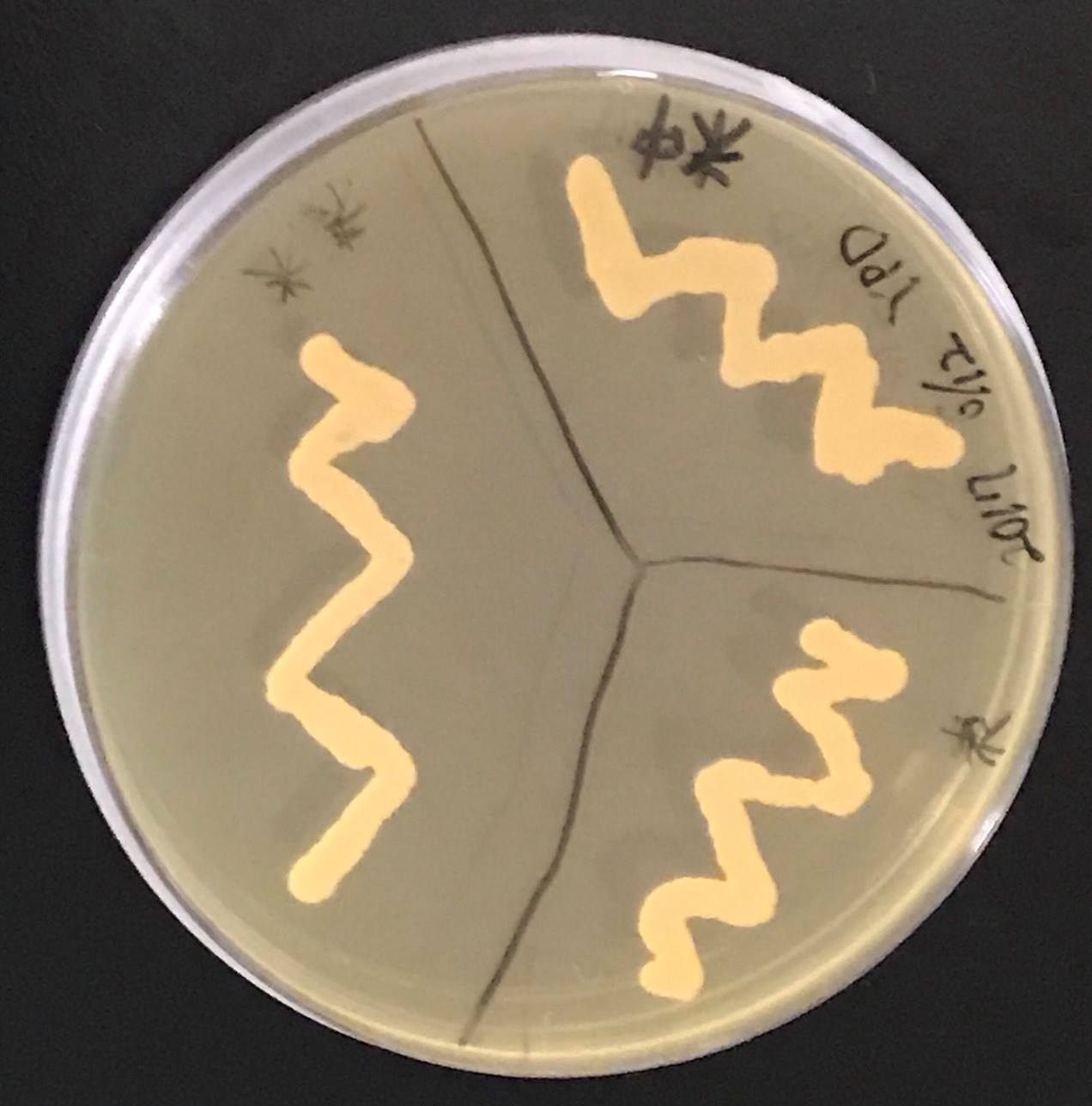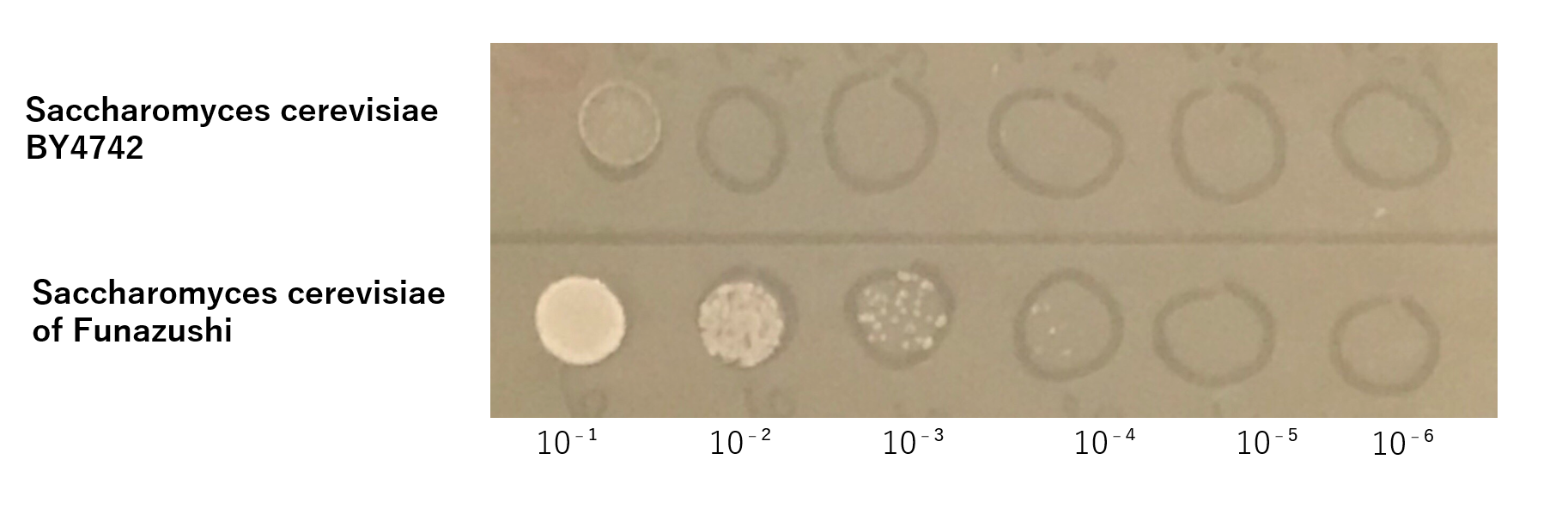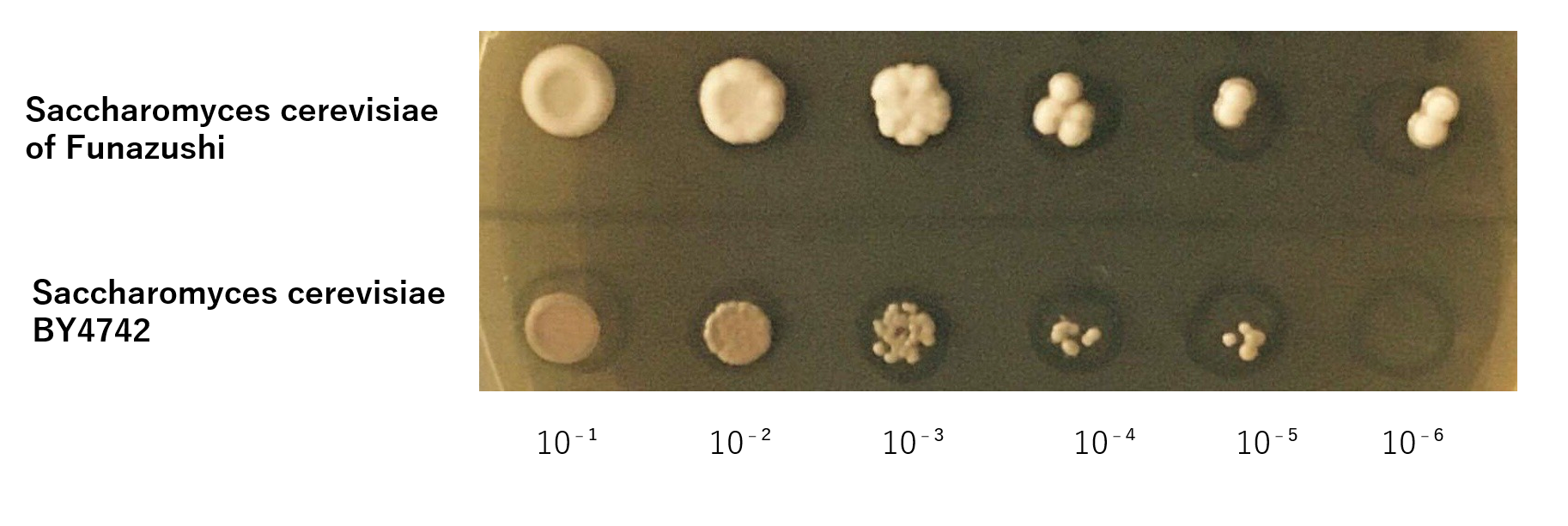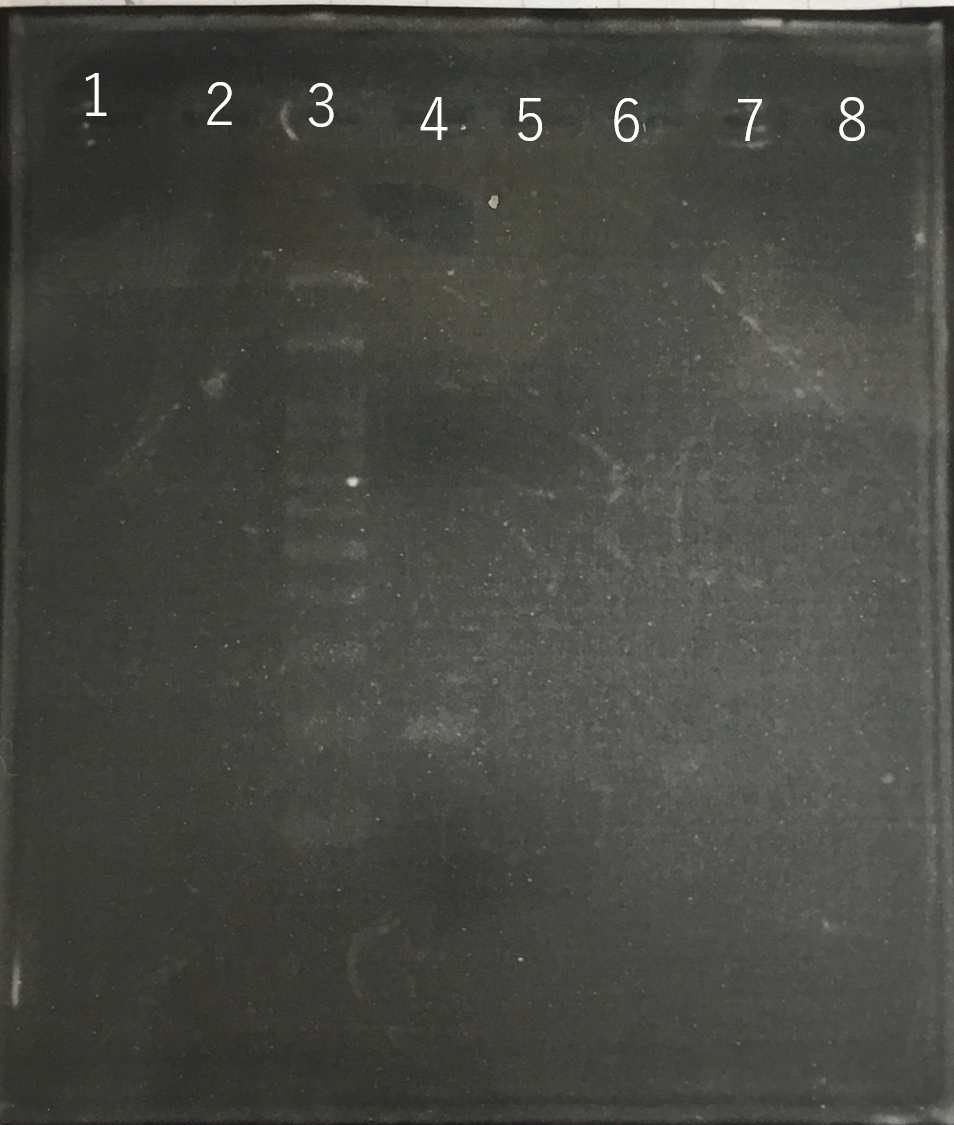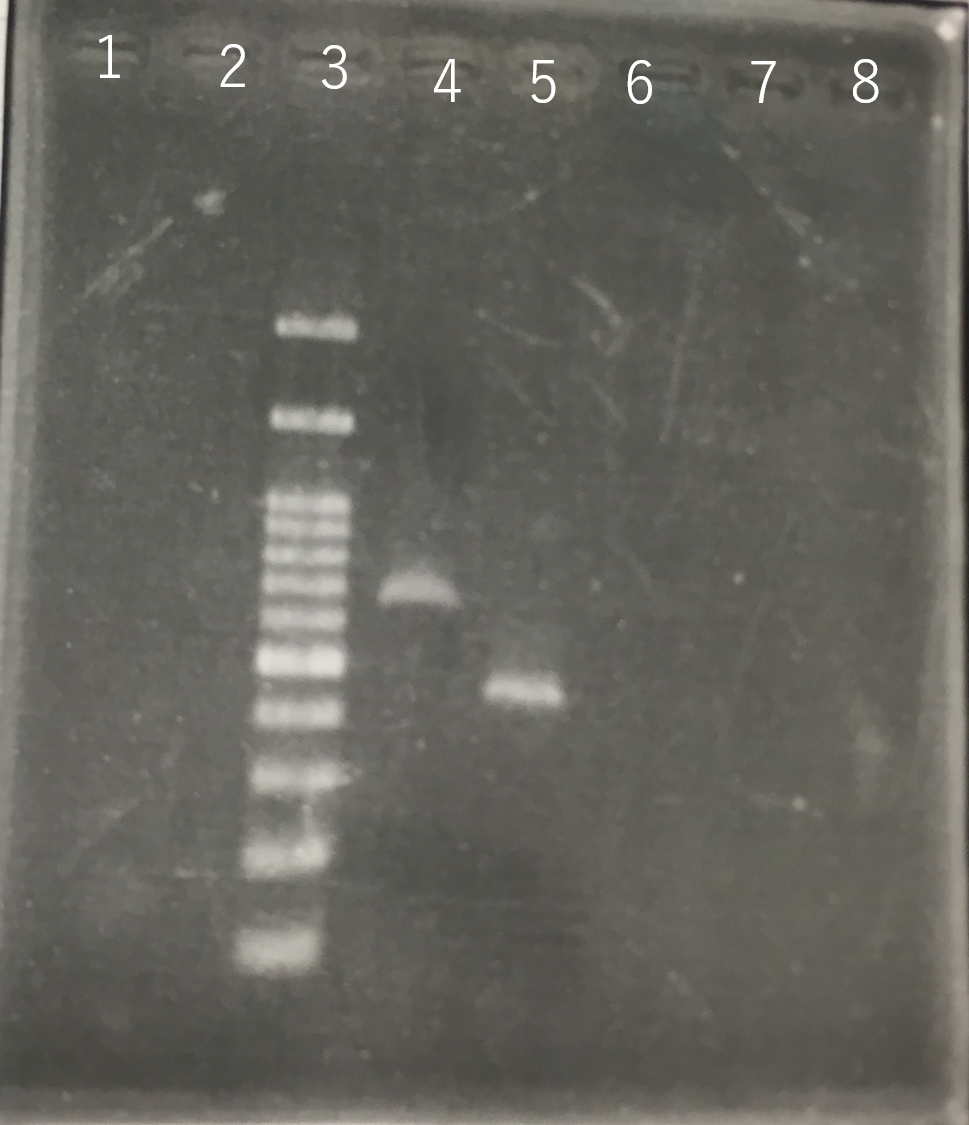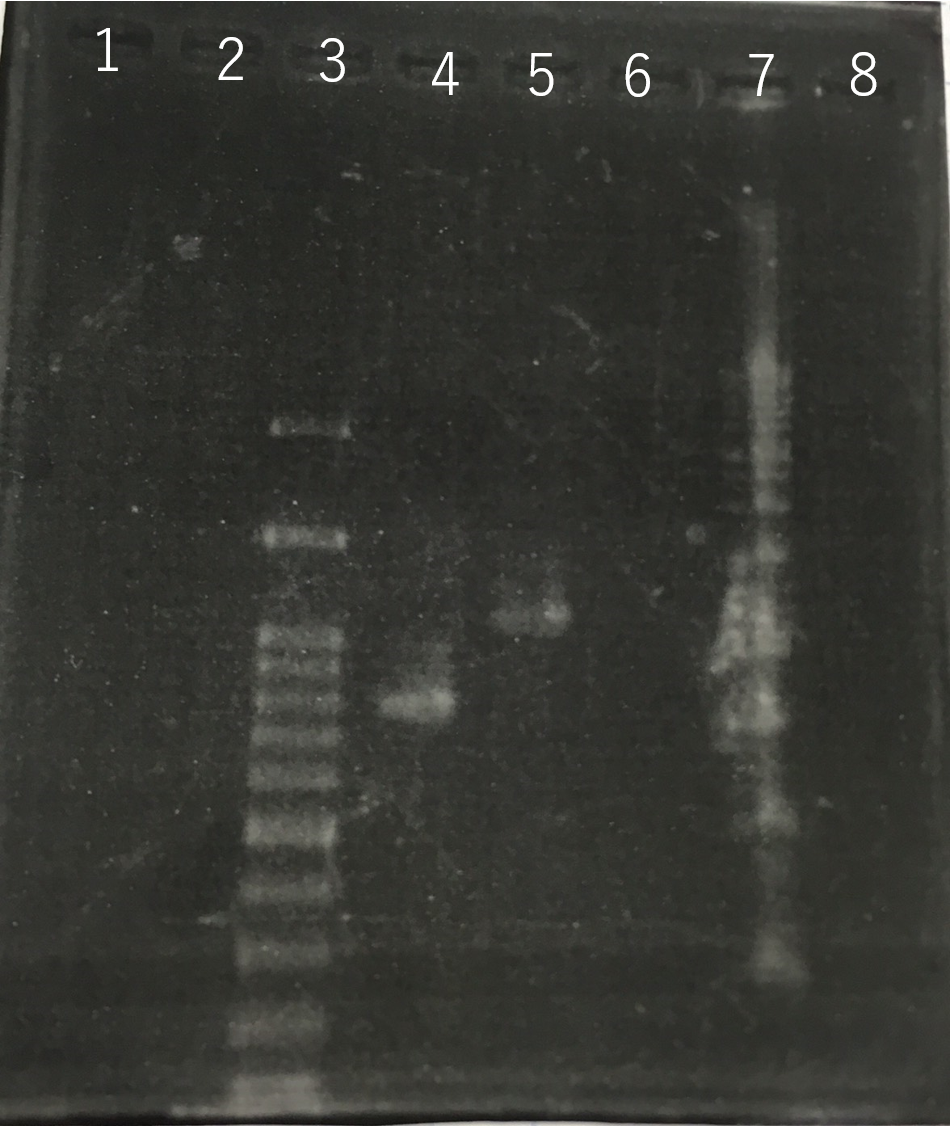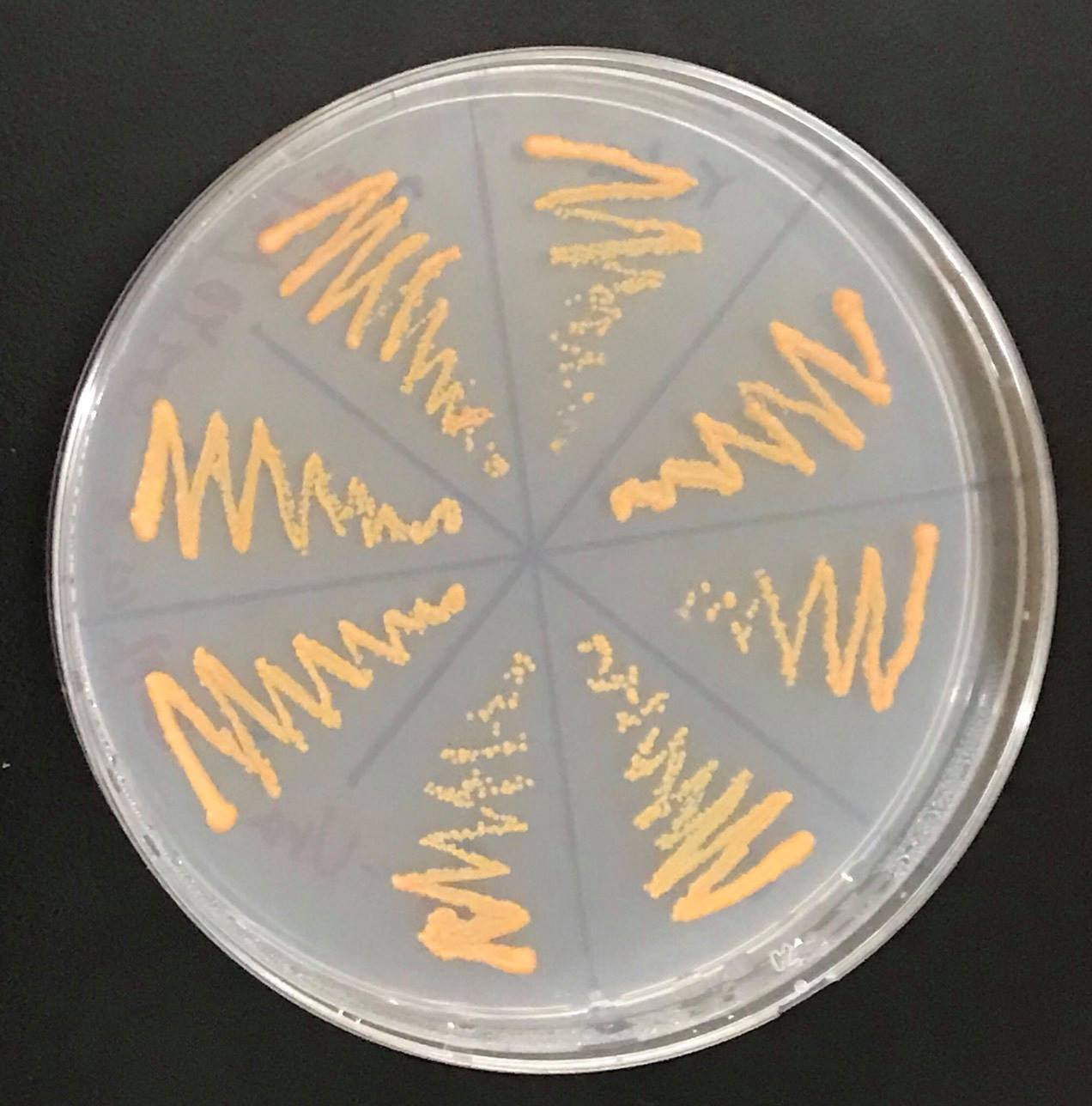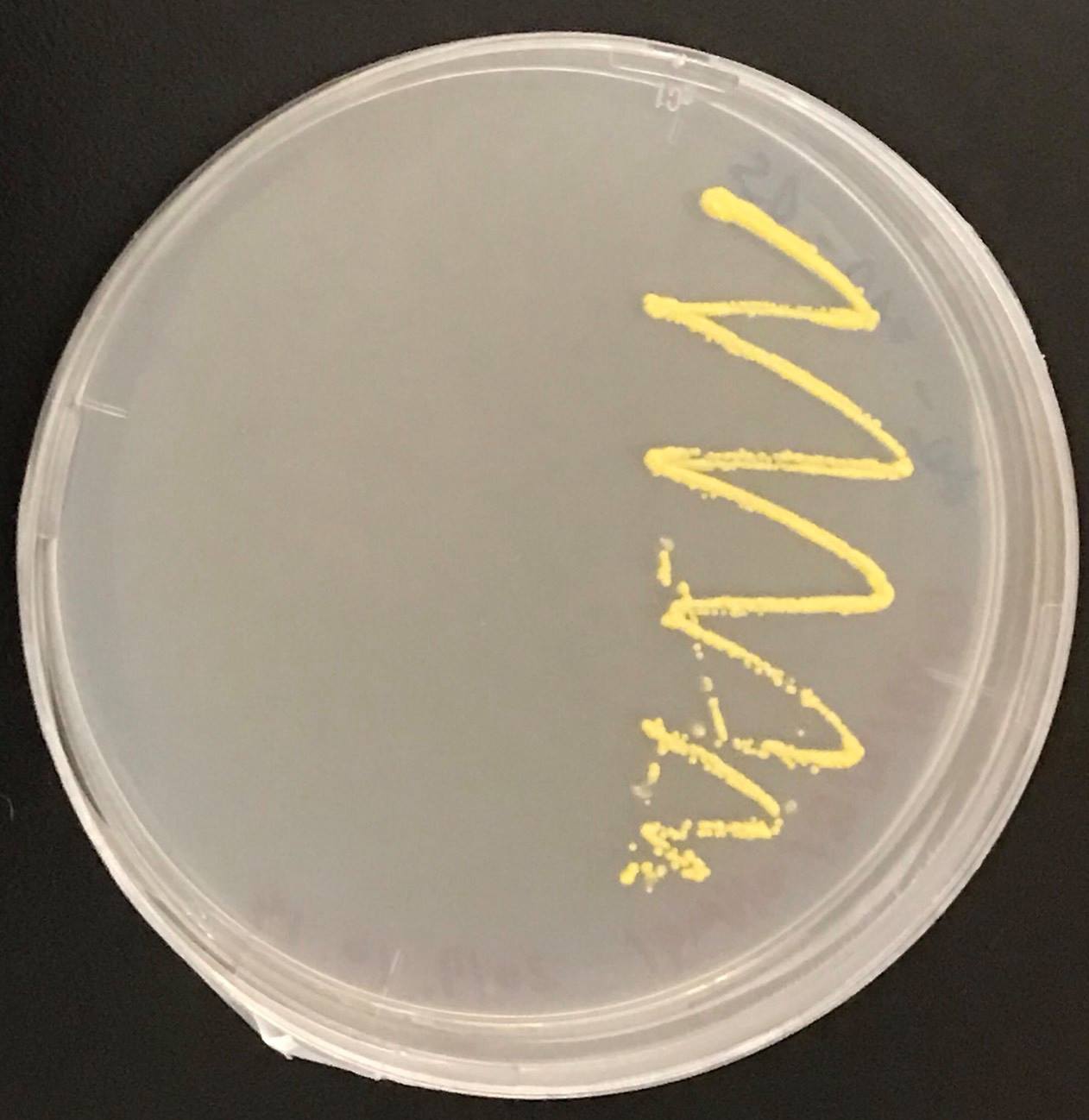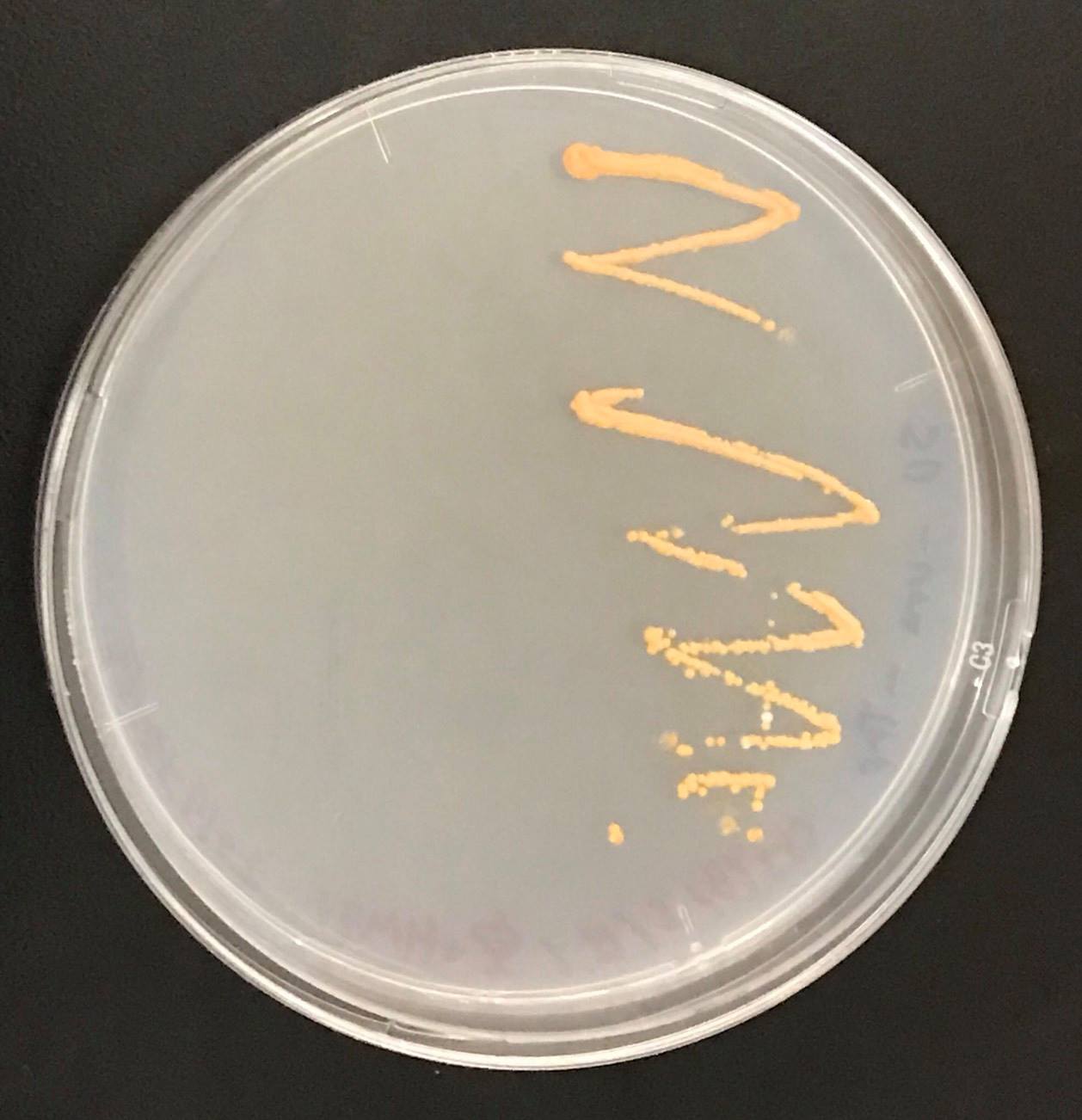| Line 12: | Line 12: | ||
Therefore we decided to use S. cerevisiae BY 4742 which is commonly used in experiment as yeast to add nutrition in Funazushi. | Therefore we decided to use S. cerevisiae BY 4742 which is commonly used in experiment as yeast to add nutrition in Funazushi. | ||
| − | [[File:colony of Funazushi.png|200px|thumb|left|Yeast of Funazushi ]] | + | [[File:colony of Funazushi.png|200px|thumb|left|Fig1.Yeast of Funazushi ]] |
<br/><br/><br/><br/><br/><br/><br/><br/><br/><br/><br/><br/><br/><br/><br/><br/><br/><br/> | <br/><br/><br/><br/><br/><br/><br/><br/><br/><br/><br/><br/><br/><br/><br/><br/><br/><br/> | ||
| Line 22: | Line 22: | ||
===The growth of S. cerevisiae BY4742 cells and S. cerevisiae of Funazushi was tested on plates containing sodium.=== | ===The growth of S. cerevisiae BY4742 cells and S. cerevisiae of Funazushi was tested on plates containing sodium.=== | ||
| − | [[File:colony of Funazushi sio.png|800px|thumb|left| | + | [[File:colony of Funazushi sio.png|800px|thumb|left|Fig2. Growth of S. cerevisiae on plates containing sodium. Serial 10-fold dilutions (10⁻¹~10⁻6) of saturated cultures were spotted onto YPD medium supplemented with 4.0 % (w/v) NaCl and growth was incubated at 30°C for 1 days.]] |
<br/><br/><br/><br/><br/><br/><br/><br/><br/><br/><br/><br/><br/><br/><br/><br/><br/><br/> | <br/><br/><br/><br/><br/><br/><br/><br/><br/><br/><br/><br/><br/><br/><br/><br/><br/><br/> | ||
| Line 30: | Line 30: | ||
===The growth of S. cerevisiae BY4742 cells and S. cerevisiae of Funazushi was tested on plates containing Lactic acid.=== | ===The growth of S. cerevisiae BY4742 cells and S. cerevisiae of Funazushi was tested on plates containing Lactic acid.=== | ||
| − | [[File:Funazushi colony low pH.png|800px|thumb|left| | + | [[File:Funazushi colony low pH.png|800px|thumb|left|Fig3. Growth of S. cerevisiae on plates containing Lactic acid. Serial 10-fold dilutions (10⁻¹~10⁻6) of saturated cultures were spotted onto YPD medium supplemented with 3.0 % (v/v) Lactic acid and growth was incubated at 30°C for 1 days.]] |
<br/><br/><br/><br/><br/><br/><br/><br/><br/><br/><br/><br/><br/><br/><br/><br/><br/><br/> | <br/><br/><br/><br/><br/><br/><br/><br/><br/><br/><br/><br/><br/><br/><br/><br/><br/><br/> | ||
| − | |||
| − | |||
| − | |||
| − | |||
| − | |||
==Confirmation whether sod2 were inserted into pYES2 plasmid.== | ==Confirmation whether sod2 were inserted into pYES2 plasmid.== | ||
| Line 45: | Line 40: | ||
The forward primer of sod2 located back the intron contained the sequence of reverse Primer in the front of intron as an adapter. | The forward primer of sod2 located back the intron contained the sequence of reverse Primer in the front of intron as an adapter. | ||
| − | [[File:the fack part of the intron of sod2.png|400px|thumb|left| | + | [[File:the fack part of the intron of sod2.png|400px|thumb|left| |
| − | + | Fig4.The result of length (the front part of the intron of sod2) by PCR<br/> | |
| − | Lane3:100bp DNA ladder | + | Lane3:100bp DNA ladder<br/> |
| − | Lane4:The front part of the intron of sod2 (185bp) | + | Lane4:The front part of the intron of sod2 (185bp)]] |
| − | [[File:the back part of the intron of sod2i.png|400px|thumb|left| | + | [[File:the back part of the intron of sod2i.png|400px|thumb|left|Fig5.The result of length (the back part of the intron of sod2) by PCR<br/> |
| − | Lane3:100bp DNA ladder | + | Lane3:100bp DNA ladder<br/> |
| − | Lane4:The front part of the intron of sod2(617bp) | + | Lane4:The front part of the intron of sod2(617bp)<br/> |
Lane5:Unrelated PCR products]] | Lane5:Unrelated PCR products]] | ||
| Line 58: | Line 53: | ||
Using these two PCR products, fusion PCR was performed. | Using these two PCR products, fusion PCR was performed. | ||
| − | [[File:fusion PCR sod2.png|400px|thumb|left| | + | [[File:fusion PCR sod2.png|400px|thumb|left|Fig6.The result of length of sod2 by fusion PCR<br/> |
| − | Lane3:100bp DNA ladder | + | Lane3:100bp DNA ladder<br/> |
| − | Lane4:sod2(772bp) | + | Lane4:sod2(772bp)<br/> |
| − | Lane5:Unrelated PCR products | + | Lane5:Unrelated PCR products<br/> |
| − | Lane6:Nothing | + | Lane6:Nothing<br/> |
| − | Lane7:1Kb DNA ladder]] | + | Lane7:1Kb DNA ladder<br/>]] |
<br/><br/><br/><br/><br/><br/><br/><br/><br/><br/><br/><br/><br/><br/><br/><br/><br/><br/> | <br/><br/><br/><br/><br/><br/><br/><br/><br/><br/><br/><br/><br/><br/><br/><br/><br/><br/> | ||
| Line 70: | Line 65: | ||
Using the restriction enzyme used to ligate the PCR product of sod 2 with pYES2 Plasmid, the plasmid extracted from E. coli was cut and the length was confirmed by electrophoresis. | Using the restriction enzyme used to ligate the PCR product of sod 2 with pYES2 Plasmid, the plasmid extracted from E. coli was cut and the length was confirmed by electrophoresis. | ||
| − | [[File:Confirmation by restriction enzyme whether sod2 were inserted into pYES2 plasmid.png|400px|thumb|left| | + | [[File:Confirmation by restriction enzyme whether sod2 were inserted into pYES2 plasmid.png|400px|thumb|left|Fig7.Confirmation by restriction enzyme whether sod2 were inserted into pYES2 plasmid<br/> |
| − | Lane1:1kb DNA ladder | + | Lane1:1kb DNA ladder<br/> |
| − | Lane2:100bp DNA ladder | + | Lane2:100bp DNA ladder<br/> |
| − | Lane3:Nothing | + | Lane3:Nothing<br/> |
| − | Lane4:Plasmid extraction from colony1 | + | Lane4:Plasmid extraction from colony1<br/> |
| − | Lane5:Plasmid extraction from colony2 | + | Lane5:Plasmid extraction from colony2<br/> |
| − | Lane6:Plasmid extraction from colony3 | + | Lane6:Plasmid extraction from colony3<br/> |
| − | Lane7:Plasmid extraction from colony4 | + | Lane7:Plasmid extraction from colony4<br/> |
| − | Lane8:Plasmid extraction from colony5 | + | Lane8:Plasmid extraction from colony5<br/> |
| − | Lane9:Plasmid extraction from colony6 | + | Lane9:Plasmid extraction from colony6<br/> |
| − | Lane10:Plasmid extraction from colony7 | + | Lane10:Plasmid extraction from colony7<br/> |
| − | Lane11:Plasmid extraction from colony8]] | + | Lane11:Plasmid extraction from colony8<br/>]] |
<br/><br/><br/><br/><br/><br/><br/><br/><br/><br/><br/><br/><br/><br/><br/><br/><br/><br/> | <br/><br/><br/><br/><br/><br/><br/><br/><br/><br/><br/><br/><br/><br/><br/><br/><br/><br/> | ||
| Line 91: | Line 86: | ||
The growth of S. cerevisiae BY4742 cells expressing sod2 was tested on plates containing sodium. | The growth of S. cerevisiae BY4742 cells expressing sod2 was tested on plates containing sodium. | ||
| − | [[File:Figsod2コロニー.png|800px|thumb|left| | + | [[File:Figsod2コロニー.png|800px|thumb|left|Fig8. Growth of S. cerevisiae expressing sod2 on plates containing sodium. Serial 100-fold dilutions (100⁻¹~100⁻6) of saturated cultures were spotted onto SD-ura medium supplemented with 4.0 % (w/v) NaCl and growth was incubated at 30°C for 3 days.]] |
<br/><br/><br/><br/><br/><br/><br/><br/><br/><br/><br/><br/><br/><br/><br/><br/><br/><br/> | <br/><br/><br/><br/><br/><br/><br/><br/><br/><br/><br/><br/><br/><br/><br/><br/><br/><br/> | ||
| Line 101: | Line 96: | ||
Constructs of carotenogenic genes were inserted on genome of S. cerevisiae. We insertion of crtYB, crtI and crtE resulted in orange colonies. | Constructs of carotenogenic genes were inserted on genome of S. cerevisiae. We insertion of crtYB, crtI and crtE resulted in orange colonies. | ||
| − | [[File:crtYB, crtI and crtEコロニー.png|200px|thumb|left| | + | [[File:crtYB, crtI and crtEコロニー.png|200px|thumb|left|Fig9.Result of colour of colony by inserting crtYB, crtI and crtE into genomic DNA of S. cerevisiae. |
]] | ]] | ||
<br/><br/><br/><br/><br/><br/><br/><br/><br/><br/><br/><br/><br/><br/><br/><br/><br/><br/> | <br/><br/><br/><br/><br/><br/><br/><br/><br/><br/><br/><br/><br/><br/><br/><br/><br/><br/> | ||
| Line 108: | Line 103: | ||
Transformation of tHMG1 resulted in yellow colonies. | Transformation of tHMG1 resulted in yellow colonies. | ||
| − | [[File:tHMG1コロニー.png|200px|thumb|left| | + | [[File:tHMG1コロニー.png|200px|thumb|left|Fig10.Result of colour of colony by inserting crtYB, crtI,crtE and tHMG1 into genomic DNA of S. cerevisiae. |
]] | ]] | ||
<br/><br/><br/><br/><br/><br/><br/><br/><br/><br/><br/><br/><br/><br/><br/><br/><br/><br/> | <br/><br/><br/><br/><br/><br/><br/><br/><br/><br/><br/><br/><br/><br/><br/><br/><br/><br/> | ||
| Line 115: | Line 110: | ||
We also introduced an empty vector of insert which tHMG1 was not inserted as control S. cerevisiae. | We also introduced an empty vector of insert which tHMG1 was not inserted as control S. cerevisiae. | ||
| − | [[File:空tHMG1コロニー.png|200px|thumb|left| | + | [[File:空tHMG1コロニー.png|200px|thumb|left|Fig11.Result of the counterpart control S. cerevisiae which was transformed crtYB, crtI, crtE and empty vector isinto genomic DNA of S. cerevisiae.]] |
<br/><br/><br/><br/><br/><br/><br/><br/><br/><br/><br/><br/><br/><br/><br/><br/><br/><br/> | <br/><br/><br/><br/><br/><br/><br/><br/><br/><br/><br/><br/><br/><br/><br/><br/><br/><br/> | ||
Revision as of 21:04, 31 October 2017
Nagahama
Contents
- 1 Result and Discussion
- 1.1 Identification of yeast of Funazushi
- 1.2 proof of concept
- 1.3 Confirmation whether sod2 were inserted into pYES2 plasmid.
- 1.4 Confirmation that S. cerevisiae expressing sod2 acquired salt tolerance
- 1.5 Confirmation whether carotene synthesis genes (crtYB, crtI, and crtE) and tHMG1 were expressed.
- 1.6 Reference
Result and Discussion
Identification of yeast of Funazushi
Funazushi was touched with a toothpick and streaked in YPD medium to grow yeast colonies. Colony PCR was performed with a primer that amplifies ITS 1 region. We sequenced the PCR products and identified yeasts of Funazushi. From the result of the sequence, the yeast of Funazushi was identified as S. cerevisiae. Therefore we decided to use S. cerevisiae BY 4742 which is commonly used in experiment as yeast to add nutrition in Funazushi.
proof of concept
First, S. cerevisiae BY4742 in order to be dominant species at high salt concentration and low pH,we investigated whether it is necessary to develop a new recombinant S. cerevisiae adapting severe environment. Accoding thesis, it is known that the salt concentration of Funazushi is 4% and pH is 3.7.So we experimented whether S. cerevisiae BY 4742 could grow like S. cerevisiae of Funazushi under this severe environment.
The growth of S. cerevisiae BY4742 cells and S. cerevisiae of Funazushi was tested on plates containing sodium.
This figure showed that S. cerevisiae of Funazushi's growth rate at high salt concentration was faster than S. cerevisiae BY4742.
The growth of S. cerevisiae BY4742 cells and S. cerevisiae of Funazushi was tested on plates containing Lactic acid.
Confirmation whether sod2 were inserted into pYES2 plasmid.
The front and the back part of the intron of sod2 were separately amplified by PCR. The forward primer of sod2 located back the intron contained the sequence of reverse Primer in the front of intron as an adapter.
Using these two PCR products, fusion PCR was performed.
The completed PCR product of the coding region of sod2 was integrated into pYES2 plasmid and transfered the resultant plasmid into E.coli. Plasmid extraction was performed from the transformed E. coli . Using the restriction enzyme used to ligate the PCR product of sod 2 with pYES2 Plasmid, the plasmid extracted from E. coli was cut and the length was confirmed by electrophoresis.
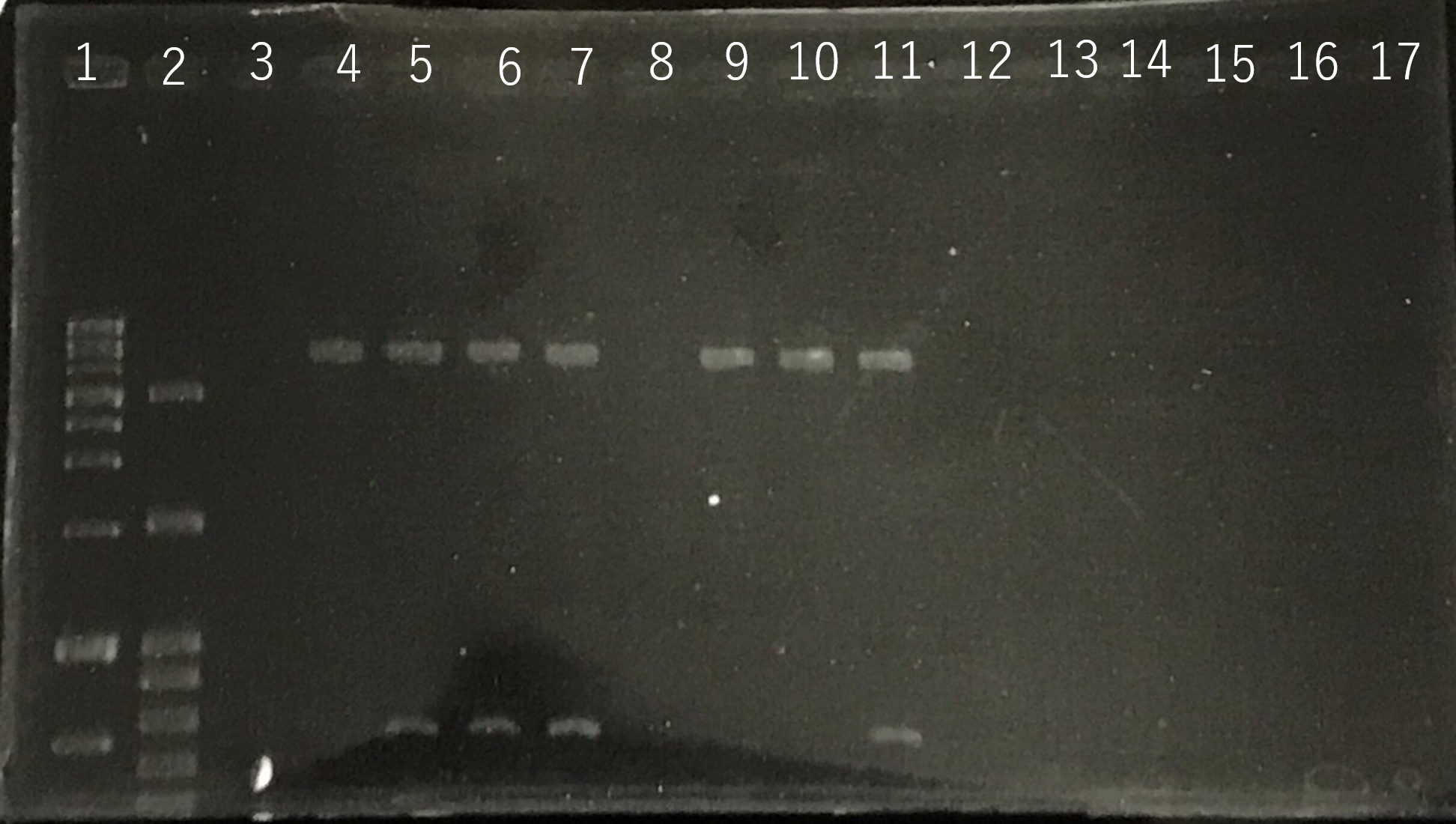
Lane1:1kb DNA ladder
Lane2:100bp DNA ladder
Lane3:Nothing
Lane4:Plasmid extraction from colony1
Lane5:Plasmid extraction from colony2
Lane6:Plasmid extraction from colony3
Lane7:Plasmid extraction from colony4
Lane8:Plasmid extraction from colony5
Lane9:Plasmid extraction from colony6
Lane10:Plasmid extraction from colony7
Lane11:Plasmid extraction from colony8
These result showed that sod2 was introduced into pYES2 extracted colony 2, 3, 4 and 8. S. cerevisiae BY4742 was transformed with the plasmid.
Confirmation that S. cerevisiae expressing sod2 acquired salt tolerance
The growth of S. cerevisiae BY4742 cells expressing sod2 was tested on plates containing sodium.
This figure shows that S. cerevisiae (sod2) cells that overexpress the sod2 product is more survived on SD-ura medium supplemented with 4.0 % (w/v) NaCl than the counterpart control S. cerevisiae transformed with an empty vector.
Confirmation whether carotene synthesis genes (crtYB, crtI, and crtE) and tHMG1 were expressed.
Constructs of carotenogenic genes were inserted on genome of S. cerevisiae. We insertion of crtYB, crtI and crtE resulted in orange colonies.
In addition, in order to increase production of beta-carotene, HMG1 gene was also inserted on the genome of S. cerevisiae. Transformation of tHMG1 resulted in yellow colonies.
These figure shows that color of YB/I/E cells and YB/I/E+tHMG1 cell are clear difference.
We also introduced an empty vector of insert which tHMG1 was not inserted as control S. cerevisiae.
This Color change shows, show that carotene synthesis genes (crtYB, crtI, and crtE) and tHMG1 were expressed.
Accoding to the paper, when tHMG1 is introduced, the amount of β-carotene synthesized is increased seven times as compared with when not. It is thought that S. cerevisiae which we created by inserting YB / I / E + tHMG1 also has increased β carotene content.


